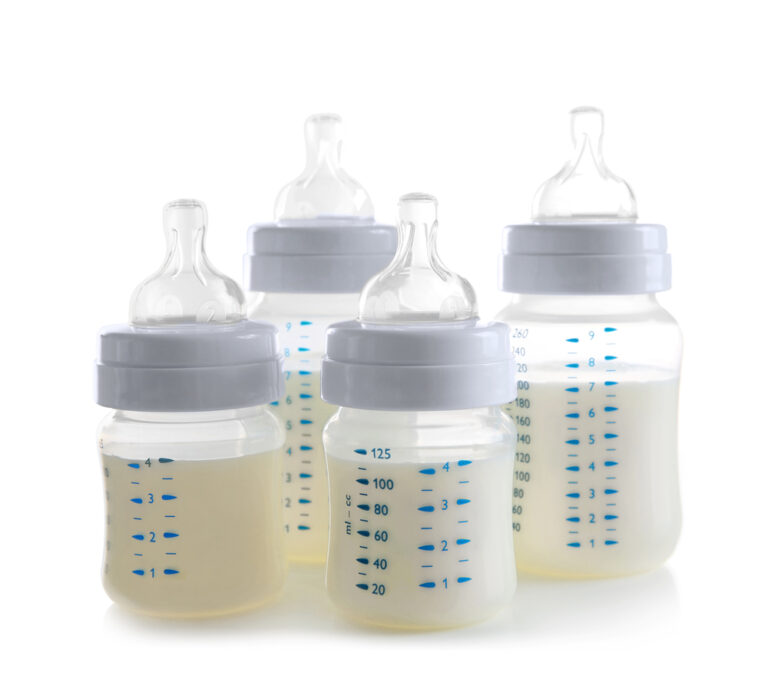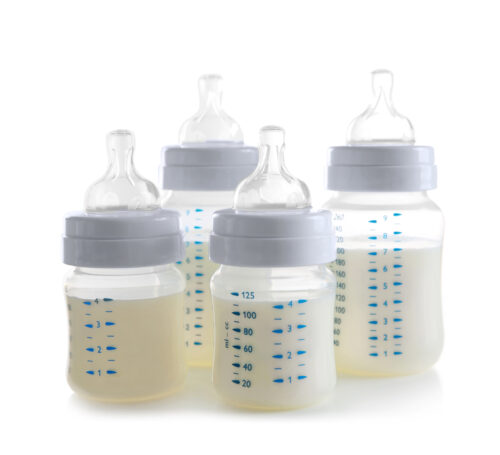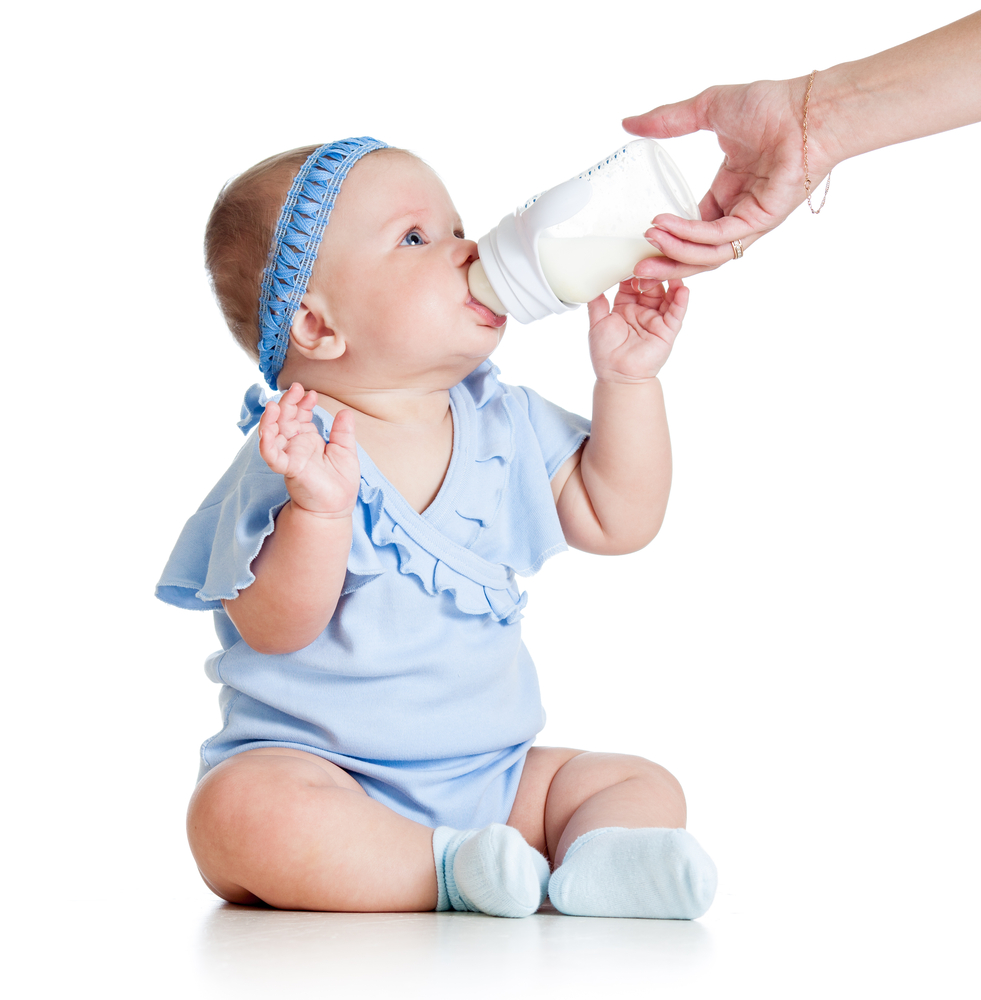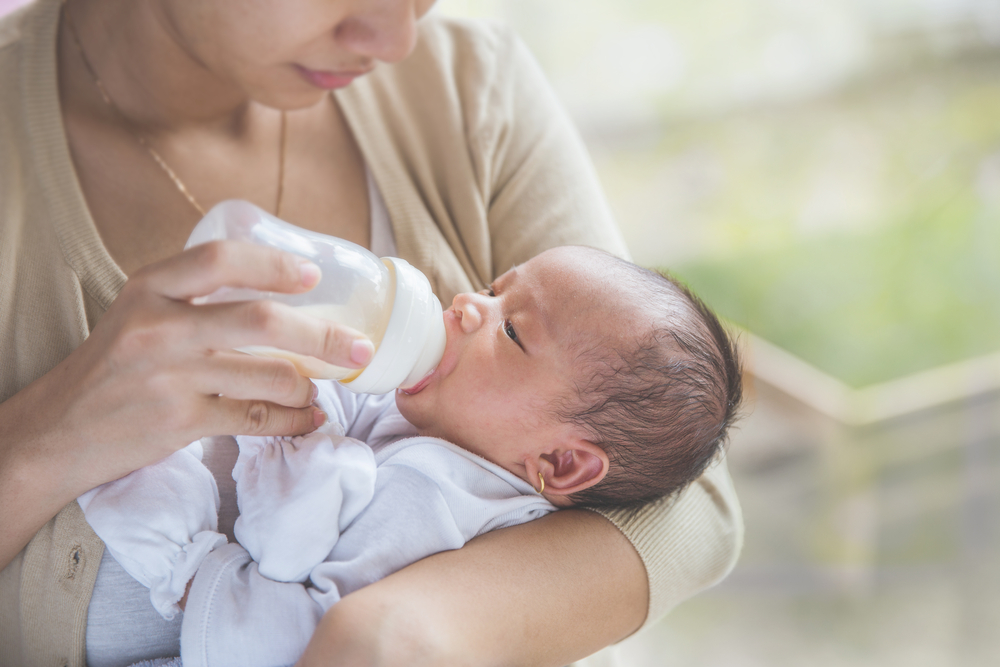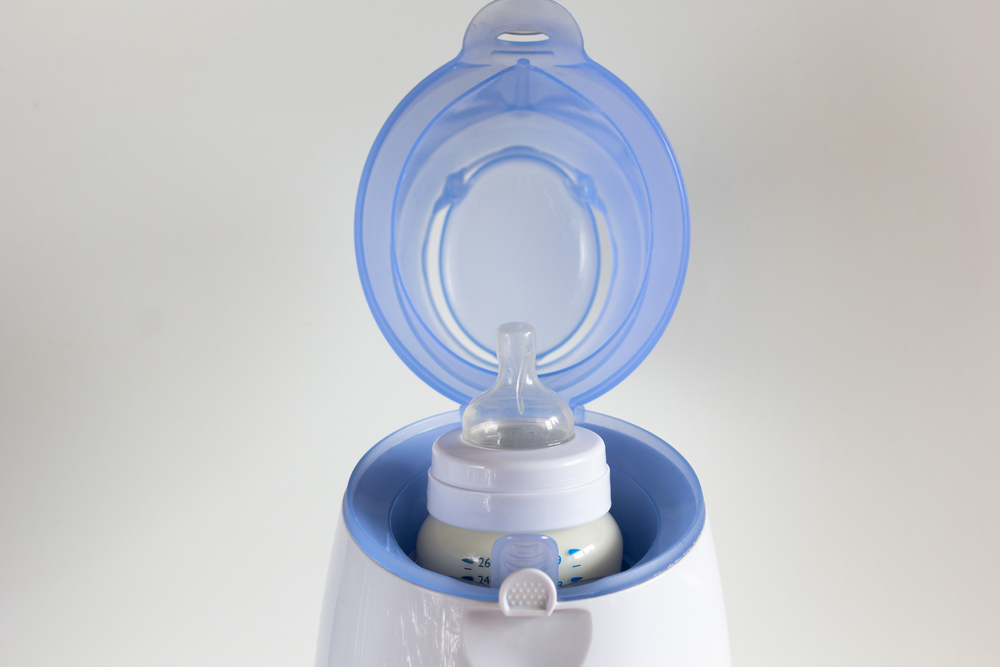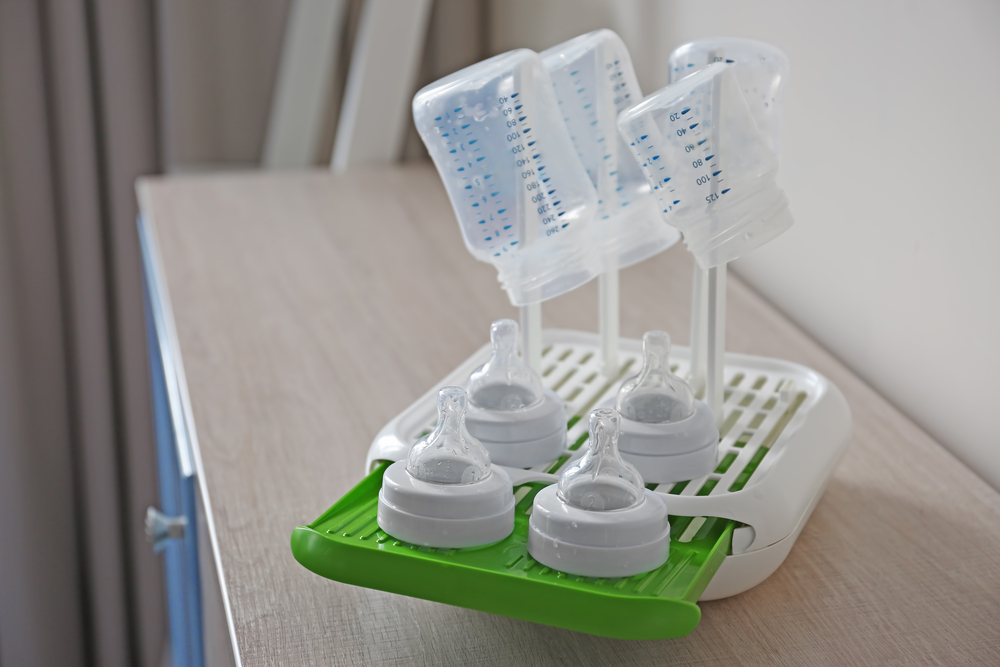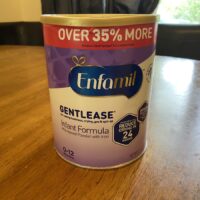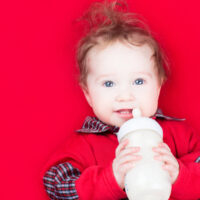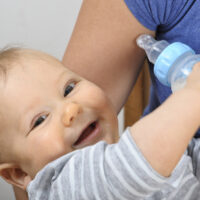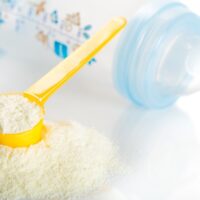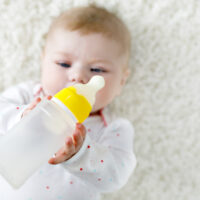The WHO estimates that roughly 86.4% of babies in the US are bottle-fed after the six-month mark. As a parent, you’ve likely got quite a collection of bottles going and subsequently, you are wondering “How Many Baby Bottles Do I Need?”
On average, your baby will go through anywhere from 5-12 bottles a day, depending on their age and whether they are also breastfeeding. Whether the bottles are 4-ounce or 9-ounce also makes a difference. If you are only using the bottles to supplement or for sending to daycare, you may find yourself needing fewer bottles. Having enough bottles to get you through the day will greatly reduce the dishwashing you are doing!
Considerations for Buying Baby Bottles
The Age of Your Baby
Newborns eat more often in fewer amounts than older infants. A strictly bottle-fed newborn will go through 8-12 bottles in a 24 hour period. You can certainly purchase 12 bottles, so you aren’t cleaning as many. However, you may notice you’ll forget what your kitchen counter looks like with that many bottles lying around.
I recommend at least having 8 bottles on hand for your bottle-fed newborn. During the day, you will need to clean some, but it reduces the number of bottles you have around your kitchen. As babies get a little bit older, they start eating more during each feeding and cutting down on the number of feedings throughout the day.
Once your baby reaches two months, you will already start to see a reduction in the number of feedings. At this point, babies will eat every 3-5 hours instead of every 2-3 hours for newborns. This will translate to a fewer number of bottles used during the day and less cleaning for you!
Is Baby Mainly Breastfed or Formula-Fed?
If you are mainly breastfeeding and your little one will only get a bottle on occasion, you can consider not stocking your house full of bottles. However, if your baby is only fed formula, you will need to rely on your stock on bottles.
As mentioned previously, you should have about 8 bottles on hand for your formula-fed baby.
However, breastfed babies don’t necessarily need the same amount of bottles. Even if your child goes to childcare or is watched by someone else during the day, you likely will only need to provide 3-4 bottles for a breastfed baby while you are away.
Pumping can bring its own set of bottles unless you have pumping bottles that you can also use to feed. My babies all preferred one type of bottle, and sadly it was not the one I could use on my pump, so I was always cleaning baby bottles.
As a tip, I would always put used bottles right in the fridge until I was ready to clean them. This way, it reduced the chance for any bacteria to grow while it sat around waiting for me to scrub away.
Finally, it’s important to wait roughly 6 weeks before introducing a bottle to a breastfed baby. You want to make sure your milk supply is fully established before you begin bottle feeding.
Are you Staying at Home?
If you stay at home with your baby and merely want to pump for your baby to get used to the occasional bottle, you only need to have about 2 or 3 bottles on hand.
You may quickly realize how not fun bottle cleaning is and stick to just breastfeeding. However, it’s always nice to let your partner or another family member feed the family from time to time.
Even if you don’t intend on offering bottles, I recommend having a couple from day one. I stayed at home with all three of my babies and planned on breastfeeding. Each one of my kiddos proved to me breastfeeding was not as natural as I originally thought.
I had to pump to supplement because they could not get the hang of nursing. I was so glad I had those bottles on hand, so I didn’t have to run out to buy any with a screaming, hungry baby.
Different Types of Baby Bottles
As with most baby products, there is not just one option when it comes to baby bottles. In fact, there are four main types of bottles to choose from.
Glass Baby Bottles
While many may think glass baby bottles are a thing of the past, they are still used today and for a good reason. Firstly, glass bottles are easier to clean and are less likely to leave any milk residue. In addition, the bottles aren’t made with any chemicals that are sometimes found in plastic baby bottles.
As with anything breakable around babies, you should be cautious when using glass bottles. If you notice any damage to the glass, it’s highly recommended to discard the bottle. The great part for the environment is you can recycle your old glass bottles.
While glass bottles are more expensive than plastic or silicone bottles, the bottles can last for multiple children with proper care. Finally, while glass usually can go into the microwave, you should still never warm up your breastmilk in that manner.
Silicone Baby Bottles
If you are looking for a baby bottle that cannot fall and break, consider buying silicone baby bottles. While they can be tough to find, they are BPA-free and lightweight. They have a higher price tag, similar to glass bottles, but you can ensure you are using a durable bottle for your baby.
In addition, silicone baby bottles are highly heat resistant, so you will have no problem sanitizing them to ensure they are clean for your little one.
Plastic Baby Bottles
You’re likely no stranger to plastic baby bottles. They are popular because they are reasonably priced and easily available, unlike glass bottles. They are also lightweight, which makes it easier for little ones to hold as they get older.
Thankfully, plastic baby bottles are mostly BPA-free. However, some cheaper brands add some chemicals, so always read the labels when purchasing plastic baby bottles. Unfortunately, unlike glass bottles, they can be more difficult to clean and are more prone to leaving residue.
Finally, you may find yourself going through more than one set of bottles for each child since they aren’t as durable as glass or silicone baby bottles. If you notice they are starting to smell or become discolored, make sure to replace them as soon as possible.
Stainless Steel Baby Bottles
Another lightweight and unbreakable option are stainless steel baby bottles. They come with a higher price tag, and replacement parts can be tricky to find, but they will last you for as long as your baby is drinking from bottles.
Stainless steel baby bottles do not contain BPA and are easier to clean than plastic and silicone bottles. They don’t get the milky residue left on other bottles, and you can rest assure your bottles are thoroughly cleaned.
Finally, one thing I dislike about stainless steel bottles is that you cannot see inside. Since all my babies had trouble gaining weight initially, I always liked to see exactly how much they ate.
Sizes of Baby Bottles
Not only do you need to choose what type of bottle you are using, but the size as well.
There are two main sizes of bottles: 4 oz and 9 oz. This will vary by an ounce in either direction depending on the brand of bottle you choose, but on average, those are the two sizes you will find. Since newborns only drink a few ounces at a time, you only need the smaller bottles, to begin with.
If you don’t want to find yourself buying a second set of bottles when your baby hits 4 months of age, you certainly can have the larger bottles from day one. Just make sure you don’t accidentally over-fill it.
Picking the Right Nipple
Before I became a mother for the first time, I had no idea there were so many considerations with bottle feeding. While there are different types and sizes of bottles, different types of nipples go with them. You can buy nipples individually, so you don’t have to buy a new set of bottles each time you want to change the flow at which your baby is eating.
Finding the Right Flow
Nipples, for the most part, come in slow, medium, and fast flow. Young babies and preemies do better with the slow flow, so the milk doesn’t come pouring out. I also recommend slow flow for babies with reflux. My second son had horrible reflux, and I never went past the slow flow of nipples because his reflux was so bad.
On average, you can switch to a medium flow when your baby is around 3 months of age, and then finally to the fast flow when they reach 6 months. Every baby is different, and it’s important to choose the flow based on how well they are feeding.
Nipple Shape
Bottle nipples can come in several different shapes. If you are breastfeeding, you likely will want to go with a nipple that mimics the breast. We have a great article on the best bottles for breastfed babies to help identify the best bottle to give your little one.
You will likely find three main shapes of nipples:
- Ergonomic – helps mimic the shape of the breast
- Standard – dome-shaped
- Orthodontic – fits in baby’s mouth better by being wider at the tip and base
Unfortunately, you sometimes will go through a bit of trial and error before figuring out which nipple shape your baby prefers. You also want to keep an eye for any holes in the nipple and replace them immediately if you find that your baby has been biting on the nipple.
Nipple Material
Finally, you will want to consider which type of material your little one prefers for the nipple. There are two main types of nipple material: silicone and latex.
Latex nipples are more traditional, and you likely will have no problem finding them on store shelves. You likely will find yourself replacing them every few months because they can decline in quality more often. In addition, some babies are allergic to latex, so you will need to avoid it altogether.
On the other hand, silicone nipples are firmer and overall more durable. They do last longer than latex nipples, but you likely will have to replace them at some point over your baby’s first year. As with all things silicone, the price tag is slightly higher, and you may not find them as easily.
FAQ on How Many Baby Bottles to Have for Your Baby
How do you properly clean a bottle?
Making sure your bottles are thoroughly cleaned and sterilized is extremely important. When you first purchase your bottles, it’s wise to boil them on the stovetop to ensure they are completely sterile. After that initial sterilization, you should hand wash the bottles after each use with warm soapy water. Finding a good bottle brush is key to really scrubbing any residue off of the bottle.
I had a bottle sterilizer that could go right into the microwave. So, I tried to use that every few days as well for extra cleaning. We have a complete review of the best bottle sterilizers to make it easy for you to pick your favorite. If your little one is under 3 months or was a preemie, it’s recommended to sterilize more often to ensure they have been thoroughly cleaned.
How often do I need to clean baby bottles?
Now we know how to clean baby bottles, but how often do you need to scrub? Bottles require cleaning after every feeding to make sure no bacteria starts to grow. You want to make sure you take everything apart to make sure you thoroughly clean each part of the bottle. Avoid using a towel to dry to help prevent the transfer of any germs.
I always made sure to designate one part of my sink to bottle feeding. I never allowed any raw foods to be cleaned in that section and felt comfortable with the bottles soaking in that area without any concern of contamination.
How often should I replace my baby bottles?
The majority of baby bottles will last the length of time you need to use them. Glass and silicone baby bottles are very durable, and the only reason you would need to get rid of them is if they become damaged. If your glass bottle chips, you will want to replace it immediately. In addition, always keep an eye on the nipple on your bottles to ensure your baby hasn’t chewed any holes in it.
You should replace any plastic bottles that develop a pesky film that won’t go away despite plenty of scrubbing. While it’s a hassle to have to buy new bottles, you want to make sure the bottles you are giving your little one are safe and clean.
Can bottles go in the dishwasher?
If the idea of hand scrubbing each bottle has you cringing, you may have wondered if you can toss them in the dishwasher. Yes, bottles can go in the dishwasher, but you need to double-check that the bottles you have are dishwasher safe. However, the dishwasher isn’t going to scrub the bottles clean as you can by hand, so you will still need to do that part.
Therefore, the dishwasher should only be used as a sanitation method and not for actual cleaning. If you choose to sanitize your bottles in the dishwasher, make sure it is on the hot setting to ensure they are thoroughly sanitized. In addition, always keep bottles and other parts on the top rack of the dishwasher, so they don’t end up in the filter.
How long do babies use bottles?
The American Academy of Pediatrics (AAP) suggests bottle use should stop at 12 months. Children who hold on to the bottle longer tend to skip meals in favor of it and prevent them from much-needed nutrients in solid foods. It’s a good idea to start introducing a cup to your child before they reach their first birthday.
Babies can get attached to their bottles, and it isn’t always easy to take them away. If your baby doesn’t let go, try to make sure their bottle isn’t the only thing they are drinking from. You can help your little one transition out of bottle feeding by offering a cup alongside the bottle.
Final Thoughts
Understandably, thinking about how many baby bottles you need can be a bit overwhelming. I promise you will do just fine when it comes to bottle-feeding. Knowing ahead of time how many bottles you need will help reduce stress when it comes to feeding.
Cleaning bottles several times throughout the day is not fun, and we don’t necessarily have the time for it either. Having a sufficient amount of bottles on hand makes it less stressful for you in the long run and gives you more cuddle time with your sweet little one. We know that’s all we really want, anyway.
